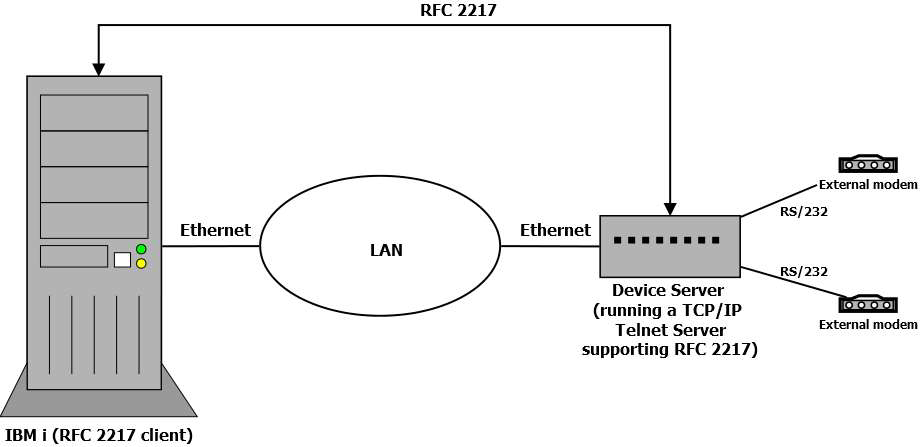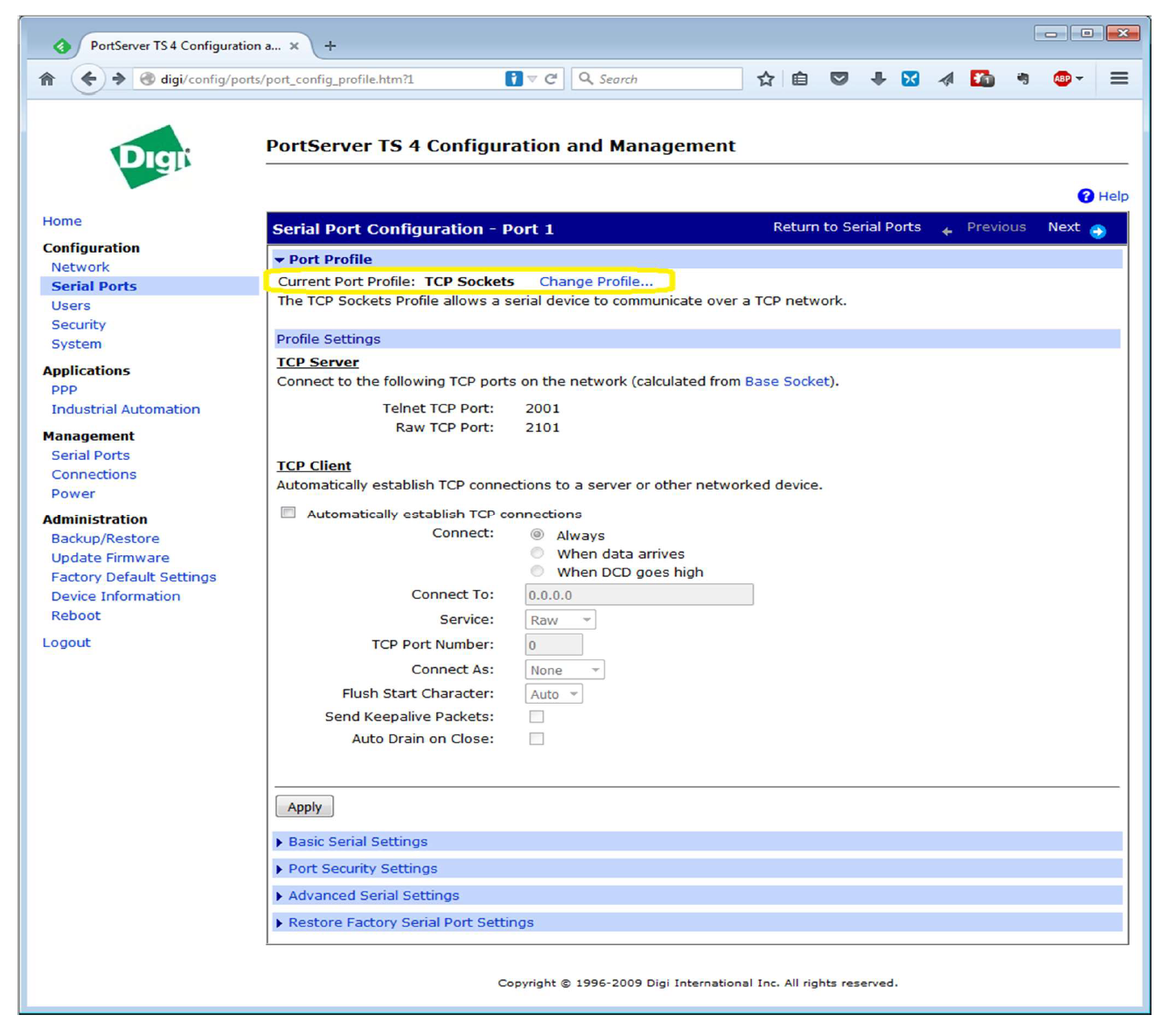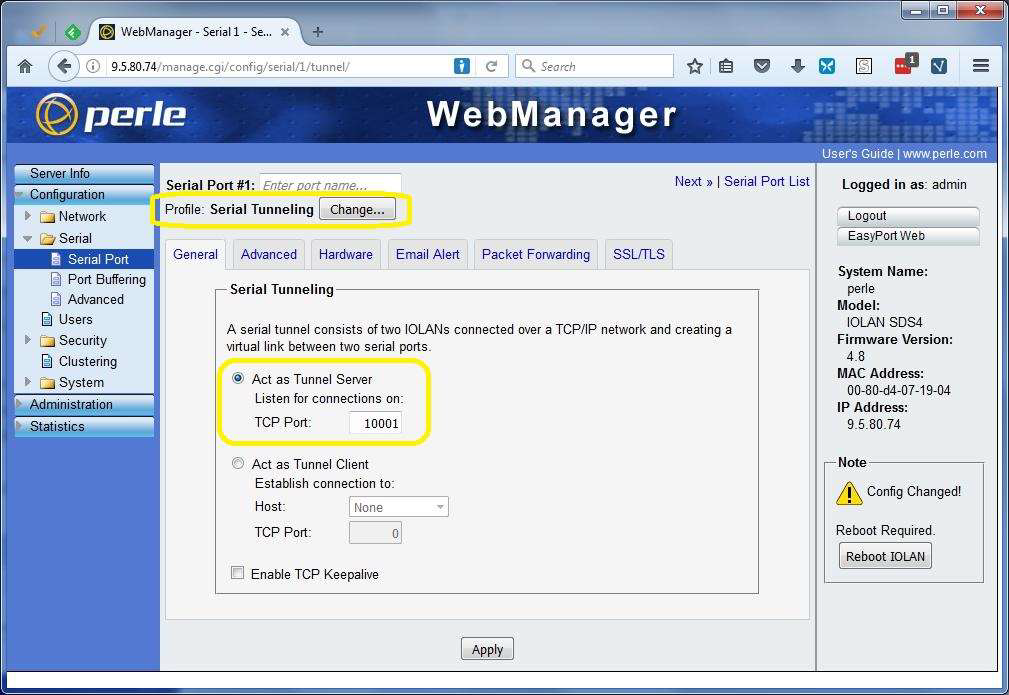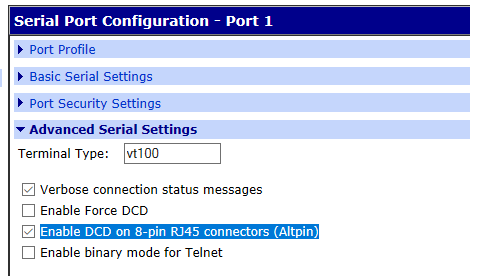News
Abstract
IBM i 7.2 Ethernet Device Server Support (WAN over LAN)
Content
IBM i 7.2 Ethernet Device Server Support (WAN over LAN)
IBM i 7.2 adds support connections to Ethernet device servers ( EDS ), which are also known as Ethernet serial servers or Ethernet terminal servers. These devices are external non-IBM equipment which are Ethernet-attached and contain one or more serial ports (RS/232) to which external modems can be attached. A compatible Ethernet device server must support RFC 2217.
RFC 2217 (Telnet Com Port Control Protocol) is an extension of the Telnet Protocol that provides a method for device servers to accept Telnet sessions and pass the Telnet data received to a com port, and pass data received from the com port to the client. It also allows the device server to send the client any serial line status changes, and allows the client to manage flow control with the device server. It also allows a client to send configuration information to a device server.
IBM i is an RFC 2217 client, and it establishes a Telnet session to an Ethernet device server that is an RFC 2217 server. An IBM i RFC 2217 session provides a virtual com port for an Async or PPP line.

IBM i support for Ethernet device servers provides the following capabilities:
- Saves PCIe slots for applications requiring a modem.
- Provides WAN connectivity for servers that do not have available PCIe slots (e.g. Blade servers).
- Allows IBM i client partitions with virtual I/O to use FAX and other WAN applications.
- Allows the same Ethernet adapter which provides TCP/IP connectivity for an IBM i partition to provide WAN connectivity
Ethernet Device Server Information
- IBM i has been tested with the following Ethernet device servers:
- Digi PortServer TS 4
- Digi ConnectPort TS 16
- Perle IOLAN SDS 4 - Ethernet device servers typically provide a web-based interface for configuration and management.
- For example, if a Digi PortServer has an IP address of 9.5.80.73, then entering http://9.5.80.73 in a web browser accesses the configuration and management interface. - Each serial port on an Ethernet device server has an assigned TCP port number.
- A specific serial port is accessed by establishing a Telnet session to the Ethernet device server IP address and the TCP port number assigned to the serial port (e.g. 9.5.80.73:2001)
Digi PortServer and ConnectPort Information
- Web-based configuration and management interface (e.g. http://9.5.80.73)
- The default user ID and password are root/dbps
- The default TCP port numbers for the serial ports start at 2001 by default and increment sequentially (e.g. 2001, 2002, 2003, …)
- The Port Profile for the serial ports must be set to TCP Sockets
- The TCP Sockets Profile allows serial devices to communicate over a TCP network. The TCP Server configuration allows other network devices to initiate a TCP connection to the serial device attached to a
serial port of the Digi device server. This is also referred to as Reverse Telnet

Perle IOLAN Information
- Web-based configuration and management interface (e.g. http://9.5.80.74)
- The default user ID and password are admin/superuser
- The default TCP port numbers for the serial ports start at port number at 10001 by default, and increment sequentially (e.g. 10001, 10002, 10003, …)
- The Profile for the serial ports must be set to Serial Tunneling
- The Serial Tunneling profile configures a serial port to establish a virtual link over the network to a serial port on another IOLAN. Both IOLAN serial ports must be configured for Serial Tunneling (typically one serial
port is configured as a Tunnel Server and the other serial port as a Tunnel Client).
- In the Serial Tunneling configuration select Act as tunnel server

It may also be necessary to check the Advanced Serial Settings and check the box to ENABLE DCD on 8-pin RJ45 connectors (Altpin):

External Modems
IBM recommends the Multitech MT9234ZBA external modem, but most V.34 external modems should work. The modem needs an RS/232 port to be able to connect to the Ethernet Device Server.
IMPORTANT NOTE for Facsimile Support (5798FAX): The Facsimile Support product requires the external modem to support FCLASS=2.1. Facsimile Support development has tested other modems with the product and Ethernet Device Server. The only modem that has successfully worked in this environment is Multitech MT9234ZBA external modem. The modem is no longer being manufactured and is only available after market. There are third party fax products available that do not use Facsimile Support and should work in this environment.
IMPORTANT: Multitech MT9234ZBA external modem default settings include DSR always ON. This causes the vary on of an IBM i switched Async or PPP line to fail. The modem must be configured to have DSR ON only when there is a connection. The procedure is included below. This same procedure should work for other external modems as well.
Changing Multitech MT9234ZBA settings to have DSR ON only when there is a connection
This procedure uses STRITF on an IBM i to change the settings on a Multitech modem. This requires that the IBM i have a WAN card with a serial port to which the Multitech modem can be attached. This procedure can also be performed by attaching the modem to a serial port on a Windows or Linux PC and using a program such as HyperTerminal or PUTTY to send the AT commands to the modem.
- Create an Asynchronous Leased Line, Controller, and Device (note, the names are examples, and you can create and use your own)
- CRTLINASC LIND(ASC_LIN) RSRCNAME(*ETHDEVSVR) LINESPEED(57600) RMTINTNETA('xxx.xxx.xxx.xxx') RMTPORT(pppp)
**Where RMTINTNETA is the IP address of the Ethernet Device Server and RMTPORT is the serial port set for the TCP Sockets profile, usually port 2001. See Digi PortServer and ConnectPort Information above for more detail on these two parameters.
- CRTCTLASC CTLD(ASC_CTL) LINKTYPE(*ASYNC) LINE(ASC_LIN)
- CRTDEVASC DEVD(ASC_DEV) RMTLOCNAME(ASC_MODEM) CTL(ASC_CTL) - Vary ON the leased line
- Power ON the MT9234zba Modem
- VRYCFG CFGOBJ(ASC_LIN) CFGTYPE (*LIN) STATUS(*ON) - STRITF ASC_MODEM (Note this has to match the rmtlocname used in the DRTDEVASC)
- Enter ATI2I3 and record the Modem Firmware Level
- Enter AT&F&S1&W0&Y0
- Power Cycle the modem
- Vary OFF and delete the Asynchronous Lease Line, Controller, and Device
- VRYCFG CFGOBJ(ASC_LIN) CFGTYPE(*LIN) STATUS(*OFF)
- VRYCFG CFGOBJ(ASC_CTL) CFGTYPE(*CTL) STATUS(*OFF)
- DLTLIND LIND(ASC_LIN)
- DLTCTLD CTLD(ASC_CTL)
- DLTDEVD DEVD(ASC_DEV)
IBM i Configuration Changes
IBM i applications that previously ran over an Async or PPP line description will run seamlessly with an Ethernet device server. However, a new Async or PPP line description must be created with the configuration information for an Ethernet device server.
- CRTLINASC, CHGLINASC, CRTLINPPP, and CHGLINPPP
- Resource Name (RSRCNAME) keyword – new value
*ETHDEVSVR - This line description uses an external Ethernet device server which supports RFC 2217. These servers are sometimes known as Ethernet serial servers or Ethernet terminal servers.
**Note: Tthe RSRCNAME keyword on an existing line cannot be changed from a local hardware resource (e.g. CMN01) to *ETHDEVSVR - Remote internet address (RMTINTNETA) – new keyword
- Internet address of the Ethernet device server.
- IPv4 and IPv6 are supported - Remote port (RMTPORT) – new keyword
- Remote TCP port for the TCP/IP connection to the Ethernet device server.
IBM Facsimile Support for i (5798FAX)
Support for Ethernet Device Servers was added to the V5R8M0 release via PTFs. The PTFs provide the necessary parameters on the CRTFAXD command to
- CRTFAXD
- Resource Name (RSRCNAME) keyword – new value
*ETHDEVSVR - Specifies an external Ethernet device server which supports RFC 2217. These servers are also known as Ethernet serial servers or Ethernet terminal servers. *ETHDEVSVR takes effect when an Ethernet device server is supported and *ASYNC is specified for the link type(LINKTYPE) parameter - PTFs Required
- 5798FAX V5R8M0
SI52896
SI54319
- 5770999 V7R2M0
MF57686
- 5770SS1 V7R2M0
SI52808
IBM Support Responsibilities
This is the wording from the RFA:
IBM support is limited to IBM's implementation of RFC 2217 and IBM software and hardware. The non-IBM vendor provides the support for their implementation of RFC 2217, their TCP/IP network connection, and any downstream modems or Fax devices. In case a problem does occur at the client site, like other non-IBM products attached through IBM LAN adapters and standard protocols, IBM will participate with clients and other vendors in problem determination under standard IBM warranty and service agreements. If IBM determines the problem is associated with the IBM adapter or with the IBM protocol implementation, normal problem resolution procedures will follow.
Problem Determination
Error when varying on an Async or PPP line description configured with RSCNAME(*ETHDEVSVR)
- Varying on the line is when a Telnet session is established to the Ethernet device server
- Check QSYSOPR or QHST for message CPDB232 which contains the reason code for the vary on failure
- Reason Codes:
- E4100001: A time-out occurred when connecting to the Ethernet device server.
* Verify that the correct IP address and port for the Ethernet device server are configured in line description.
* Verify that the Ethernet device server responds to a ping command from the IBM i. Note that even though an Async or PPP line is used, the Telnet data to the Ethernet device server will typically flow over an
Ethernet line, depending on the TCP/IP routing configured on the system.
* Verify that the Ethernet device server is configured as a Telnet server that accepts RFC 2217 connections from a Telnet client.
- E4100002: The Ethernet device server refused the connection.
* Verify that the Ethernet device server is configured as a Telnet server that accepts RFC 2217 connections from a Telnet client.
* Verify that the Ethernet device server port is not currently being used by a different client.
- E4100003: An error occurred when connecting to the Ethernet device server.
- E4100004: A Telnet session could not be established to the Ethernet device server.
* Verify that the Ethernet device server is configured as a Telnet server that accepts RFC 2217 connections from a Telnet client.
- E4100005: The Ethernet device server does not support the Telnet ComPort Control Option (RFC 2217).
* Verify that the Ethernet device server supports RFC 2217 and is configured as a Telnet server that accepts RFC 2217 connections from a Telnet client.
- E4100006: The Ethernet device server does not support Telnet binary transmission.
* Verify that the Ethernet device server is configured as a Telnet server that accepts RFC 2217 connections from a Telnet client.
- E4FFFFFF: An unexpected error occurred.
* Check for 0700 0560 VLOGs or PAL entries for the line description.
LIC Trace
A LIC Source/Sink trace of the Async or PPP line description includes the WANP (RFC 2217 Telnet client) support.
TRCINT SET(*ON) TRCTBL(ASYNC) SIZE(5 *MB) TRCTYPE(*SRCSINK) LIN((ASCETH))
Communication Trace
A communication trace for an Async or PPP line configured with RSRCNAME(*ETHDEVSVR) collects exactly the same data as for an Async or PPP line configured with a normal hardware resource on a WAN card (e.g. RSRCNAME(CMN01).
e.g. STRCMNTRC CFGOBJ(ASCETH) CFGTYPE(*LIN) MAXSTG(2M)
Since the Telnet data is sent over a TCP/IP connection to the Ethernet device server, it may also be necessary to collect a communication trace for the line over which the Telnet TCP/IP packets are flowing (typically an Ethernet line). It may be helpful to reduce the size of a communication trace on an Ethernet line by restricting it to packets containing the IP address of the Ethernet device server.
e.g. STRCMNTRC CFGOBJ(ETHLINE) CFGTYPE(*LIN) MAXSTG(2M) CMNTRCOPTS(*RMTIPADR) RMTIPADR('9.5.80.73')
LIC LOGs
The following major/minor codes are relevant for an Async or PPP line configured with RSRCNAME(*ETHDEVSVR)
- 0700 E8C9 – Async Line IOM
- 0700 0540 – PPP Line IOM
- 0700 0560 – WAN Port Telnet Driver (RFC 2217 client)
PAL Entries
- PAL entries with a Name matching the Async or PPP line name are relevant
- PAL entries with a Component of PPP, YI, or WANP are relevant
Was this topic helpful?
Document Information
Modified date:
09 April 2024
UID
nas8N1020574